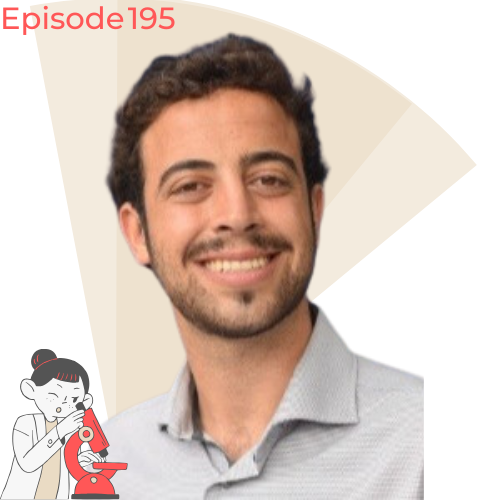What to Expect:
In this episode, Jose L Ocana-Pujol delves into his research on the fundamental principles of thermodynamics and their applications in various scientific and engineering fields. Jose shares his journey from studying engineering in Spain to conducting thermodynamics research at the University of Barcelona, and discusses the importance of understanding thermodynamic principles in both science and daily life.
About the Guest:
Jose L Ocana-Pujol
Jose L Ocana-Pujol is a PhD researcher at the ETH in Zurich, Switzerland. His work focuses on understanding the fundamental principles of thermodynamics and their applications in various scientific and engineering fields. Jose’s research aims to provide insights into how thermodynamic principles govern the behaviour of systems and processes.

🌟 Key Takeaways from This Episode:
- Thermodynamics in Everyday Life: Understanding the fundamental principles of thermodynamics and their applications.
- Career Journey: From studying engineering in Spain to conducting thermodynamics research in Barcelona.
- Favourite Experiment: Investigating the entropy changes in different thermodynamic systems.
🔬 In This Episode, We Cover:
Jose’s Research :
Jose’s research focuses on understanding the fundamental principles of thermodynamics and their applications. By investigating how thermodynamic principles govern the behaviour of systems and processes, he aims to provide insights that can be applied in various scientific and engineering fields.
Jose’s Career Journey:
Jose’s academic journey began with a Bachelor’s in Engineering in Spain. He pursued his passion for thermodynamics, leading him to his current role as a PhD researcher at the University of Barcelona, where he focuses on understanding the fundamental principles of thermodynamics.
Jose’s Favourite Research Experiment:
Jose’s favorite experiment involves investigating the entropy changes in different thermodynamic systems. By studying how entropy evolves in various processes, he aims to better understand the principles that govern system behavior and energy transfer.
Life as a Scientist: Beyond the Lab
Jose values the collaborative nature of scientific research and enjoys engaging with the global scientific community. He is passionate about teaching and mentoring the next generation of scientists and values the opportunity to apply thermodynamic principles to real-world problems.
Jose’s 3 Wishes
- Increased funding for research: Jose wishes for more financial support to advance innovative research projects.
- Greater collaboration between researchers: He advocates for stronger partnerships to enhance knowledge sharing and collaborative efforts in research.
- Improved public understanding of scientific research: Jose emphasizes the importance of public awareness and support for scientific advancements.
Jose’s Time on @RealSci_Nano:
Jose will be taking over the RealSci_Nano Twitter account to share his research on thermodynamics and its applications. Followers can expect to learn about the fundamental principles that govern the behavior of systems and processes, as well as insights into the practical applications of thermodynamics.
Join the Conversation
Follow & listen to “Under the Microscope” on Spotify, Apple Podcasts, Castbox, Amazon Music, Goodpods.
Got your own favourite podcast app? Follow the RSS link to find Under the Microscope.
Watch the video of all Under the Microscope episodes on The Science Talk’s YouTube channel. While you are at it, make sure to subscribe to our YouTube Channel.
Learn more about Under the Microscope – https://thesciencetalk.com/under-the-microscope/
Love what we do? Support us:
We also offer partnerships to scientists, research institutions, industry, funding bodies & societies.
Get in touch to start the conversation.
